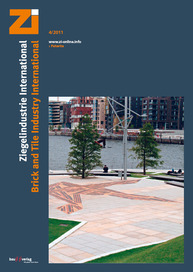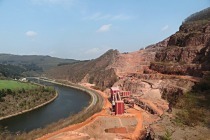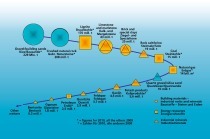Mining residue as raw material for bricks and tiles
By comparison: German heavy clay plants consumed 8.2 million tons of raw material in 2008.
In the intention of doing something about the wasteful use of resources, Germany‘s Federal Institute for Geosciences and Natural Resources (BGR) recently conducted a study in which most such sludge was found to be potentially useful for the brick and tile industry. The particle size spectrum of such material matches up very closely with that of normal everyday heavy clay body.
There is a hitch, though: In order to make plastic filter cake from thick sludge, the gravel plant operators would need to invest large sums in membrane filter presses.
On the other hand, there is also plenty of dry residue to go around. More than 800 stone quarries in Germany alone produce millions of tons of unused filler and fine screenings. Some of that material could contribute significantly toward reducing the cost of ceramic production processes. With a view to intensifying this very interesting subject, pertinent discussions are being held with Germany‘s Federal Association for Mineral-base Raw Material Producers (Bundesverband Mineralische Rohstoffe – MIRO).
According to the EU Directive on resource conservation and to the German government‘s own sustainability concept, raw material mining needs to be strictly limited. The German Federal Environmental Agency even sees future raw material being recycled from the contents of anthropogenic waste stores – a process referred to as “urban mining”.
Even before things get that far, however, the brick and tile industry can actively contribute to the conservation of resources by exploiting suitable mining residues. That is good for the environment as well as for for one‘s image. It would also provide a convincing rationale for the indispensable coexistence of regional clay pits.
There is no use trying to achieve goals that run counter to the current of time, and it does not feel good, either. Conversely, going with the times feels good and is usually even easy.





